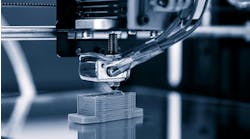The Roaring Twenties always fascinated me. Maybe it’s because it was the first decade of the modern world—a world fueled by mass production and bigger-than-life characters from Al Capone to Babe Ruth. The confluence of technology and personality, Prohibition and progress, made it a wild time in America. And it culminated in a thud, or more specifically, a crash in 1929.
We are about to enter the 2020s, and again find ourselves in manic fervor of manufacturing optimism, of embracing disruptive new technology and putting America first. Additive manufacturing, automation and the Industrial Internet of Things, protectionist trade policies: Everything seems perfectly positioned for a roaring comeback.
But not in 2019.
My experience covering nearly every facet of manufacturing, from new tools and machines to changing strategies and threats, leads me to believe this decade will end in what amounts to a whimper. It’s a case of too much of a good thing. I research and write about dozens of cool innovations every month, but the law of diminishing returns is overdue. And the issue clouding any sunny 2019 forecast is the ability for manufacturers to find enough skilled workers to handle all the new tech that has burst forth. Every fantastical new robot and smart solution that’s released also carries the burden of training workers to use them and the cost of maintenance. The Industry Pulse: 2018 Manufacturing Workforce Report found that 99% of manufacturers expect finding experienced hires will be a major issue.
More automation and more connected devices will at some point counter the lack of people, but factories and job shops have to hold the line and wait for reinforcements which would presumably come as robot get cheaper and more kids come around to the trades.
And robots will pick up more slack in 2019. Universal Robots announced it sold its 25,000th collaborative robot, but cobots still only accounted for 3% of overall industrial robot sales in 2017. By 2025, cobots are projected to own a third of the industrial robot market, according to Loup Ventures Research.
“With this increase in market share will come an increase in job demand and manufacturers will start to operate more efficiently,” says Ryan Braman, Test Engineering Manager at TUV Rheinland of North America. “We’re also seeing a lot of big companies—and even low-volume manufacturers—already implementing cobots. So far, these companies have seen a really great return on investment, boosting business growth.”
Bramen points out that the next year need more of an emphasis on standardizing robot deployments.
“Right now, there is not one hard and fast document that addresses all robot use cases, he says. “However, I think next year, we’ll start seeing new standards coming out that look at safety for new robotic innovations and even address some of the potential complications future robotics might hold.”
Then there’s Industry 4.0. Accenture predicts the IIoT will add $14.2 trillion to the global economy, but a survey I conducted over the summer for IndustryWeek shows that 56% of manufacturing executives are still waiting for the right use case or don’t have any plans to deploy an IIoT solution. If so many are reluctant to evolve, sweeping changes aren’t likely.
The rise of cyberattacks and fear of expanding vulnerability has also led to reluctance. Consulting firm BDO found a 350% increase in ransomware attacks this year. There are plenty of white hats in both the old guard and on the startup side, launching software and platforms to stay ahead of threats (like Xage Security’s blockchain platform), so while it’s a critical issue, that anxiety should dissipate.
I suspect fear of failure is a bigger reason. No one wants to risk being their company’s Charlie Brown, raring back for a prodigious kick only to have Lucy tuck the ball at the last second. So expectations of the digital transformation’s future are high, but for now are clearly tempered by pragmatism.





